The first time home buyer incentive is an incentive offered by the government to help lower the monthly mortgage payments of buyers.
Everything you need to know about the incentive including how it works, qualification requirements, and repayment information is here.
You’ll be able to use this information to help you decide if you can qualify for this incentive and whether it’ll be the best option for you.
What is the first time home buyer incentive?
The first time home buyer incentive is a shared equity mortgage (loan) offered by the government, in which they invest in the property with you. The incentive is not interest bearing and does not require on-going payments, but you do have to repay the loan within a 25 year period of when sold, whichever comes first.
This incentive is a loan, and is not to be confused with the BC HOME Partnership which was a down payment matching scheme.
A shared equity mortgage is where the government shares in the upside and downside of the property value. Therefore, the loan amount is calculated based on fair market value at the time of repayment, and is either 5% or 10% depending on whether your purchase was a resale or presale property.
How does the incentive work?
The incentives offered are dependent on whether you are purchasing a resale home or a presale/new construction home. The amount of the first time home buyer incentive is as follows:
- 5% for a first-time buyer’s purchase of a re-sale home
- 5% or 10% for a first-time buyer’s purchase of a new construction
The amount you repay is dependent on the market value of the property when sold or after 25 years, whichever happens first.
Because this is a shared equity mortgage, this means that the incentive amount is based on the fair market value of the property at the time of repayment. Therefore, if the value of your property INCREASES at the time of repayment then you will owe MORE because your incentive percentage is based on the value. Alternatively, if the value of your property DECREASES at the time of payment, then you will owe LESS because the incentive percentage is based on the lower value.
As an example, if when you purchased the property you bought it for $200,000, but it’s now worth $300,000, then the 5 or 10% incentive is based on the $300,000.
The Incentive is not interest bearing and does not require ongoing repayments, and there is no pre-payment penalty.
How does repayment work?
Repayment of the incentive must occur after 25 years or if the property is sold, whichever happens first.
You can repay the Incentive at any time in full without a pre-payment penalty.
The repayment of the Incentive is based on the property’s fair market value as this is a shared equity mortgage.
Think of this as an investment by the government. If the value goes down, your repayment is lower; if it goes up, your repayment is higher.
Who qualifies for this incentive?
There are a few qualifiers to apply for this incentive:
- you must still meet the minimum down payment requirements rules in order to be eligible
- your maximum qualifying income is no more than $120,000
- your total borrowing is limited to 4 times the qualifying income
- you must be purchasing the property as your primary residence
If you meet all of the above criteria, then you can then apply for a 5% or 10% shared equity mortgage with the Government of Canada. Applications start as of September 2, 2019, and the completion cannot occur before November 1, 2019.
The incentive is not offered to those that are purchasing for investment purposes; you must be purchasing the property to live in it in order to qualify for the incentive.
Who is considered a first time home buyer?
You are considered a first-time homebuyer if you meet one of following qualifications:
- you have never purchased a home before
- you have gone through a breakdown of a marriage or common-law partnership (even if you don’t meet the other first-time home buyer requirements).
- in the last 4 years, you did not occupy a home that you or your current spouse or common-law partner owned
IMPORTANT: It’s possible that you or your spouse or common-law partner qualifies for the First-Time Home Buyer Incentive (if you are in a married or common-law relationship) with the 4-year clause even if you’ve owned a home.
How the 4 year clause works: The 4-year period begins on January 1 of the fourth year before the year you purchased your home. It ends 31 days before the date you purchase your new home. Here are a few examples:
- if you purchase a home on March 31, 2016, the 4-year period begins on January 1, 2016 and ends on February 28, 2020
- if you sold your home you lived in in 2014, you may be able to participate in 2019 or if you sold the home in 2015, you may be able to participate in 2020
An Example of the First Time Home Buyer Incentive
Emily has an annual qualifying income of $83,125.
To be eligible for Canada’s First-Time Home Buyer Incentive, Emily can purchase condominium unit up to $350,000. John has the required minimum down payment of 5% of the purchase price, $17,500 from savings.
Emily can receive $35,000 in a shared equity mortgage – 10% of a newly constructed home.
This would reduce John’s mortgage payments by $200 a month or $2,401 a year.
Years later, Emily has decided to sell the condominium unit, but it is now worth $320,000. When the condominium unit is sold at the price of $320,000, Emily will have to repay the incentive as a percentage of the home’s current value. This would result in Emily repaying 10%, or $32,000 at the time of selling the house.
If you’re looking to purchase a property and would like guidance on how to get the ball rolling, then give us a call. We’re happy to walk you through the process so that you have a clear idea of how to purchase with or without the incentive from the start. Start a conversation by calling 604-341-9937. Prefer text? 604-341-9937 or email [email protected]. We’re here to help.



